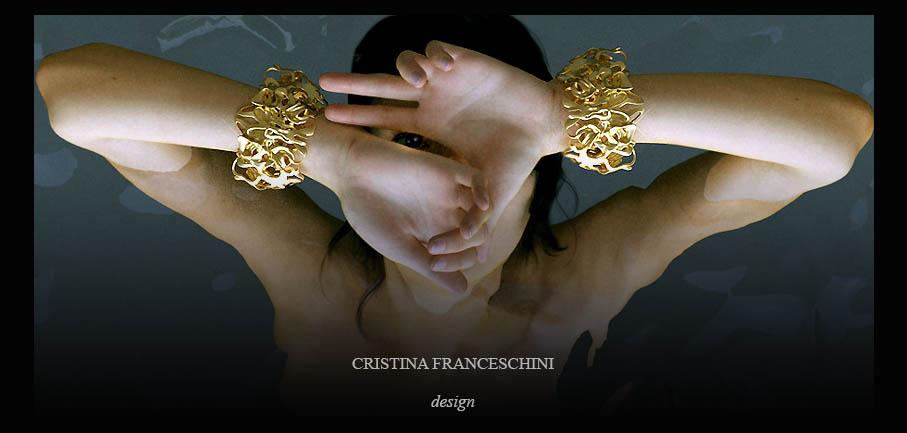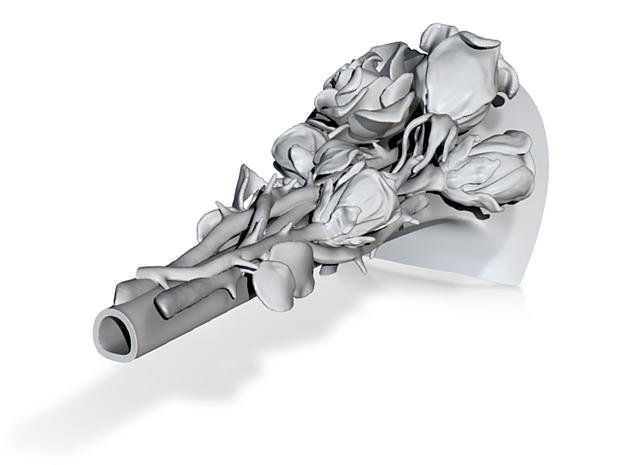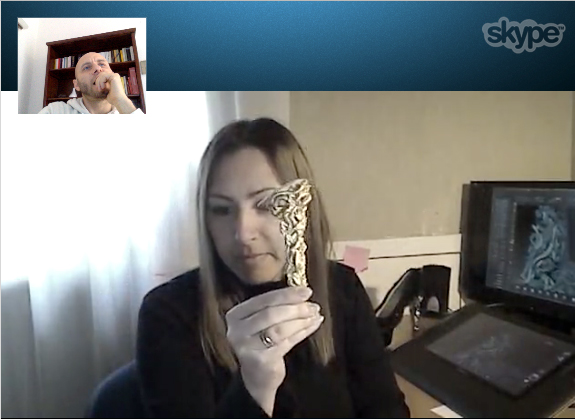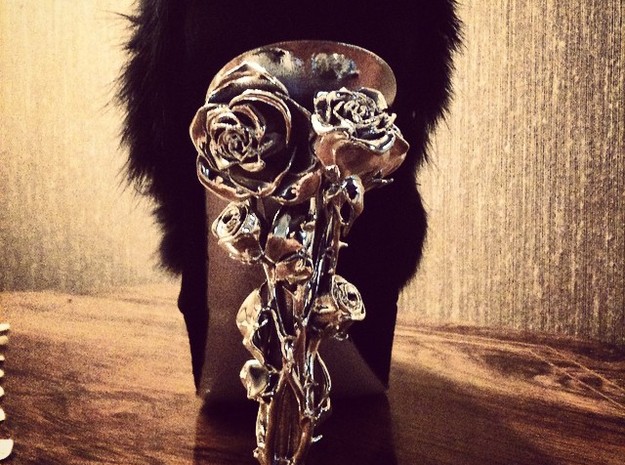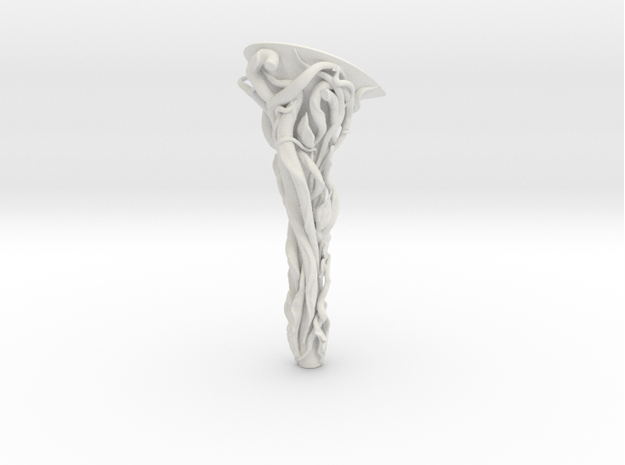Italian shoe craft is known throughout the world and its myth is made up both of high fashion designers and experienced shoe makers, who have passed their craft on for generations. Now, both have to transition into the digital manufacturing era. Some young designers, like Cristina Franceschini (aka Crystif), have proven more receptive than others and have been able to use their expertise, along with new, on-demand manufacturing services like Shapeways, to determine their own path in what remains a very traditional arena.
I first met Cristina Franceschini because she was one of the very first followers of my Italian blog on 3D printing and has been a follower ever since. In return, I started following her as a Shapeways designer. After she published yet another interesting piece, I resolved to get in touch with her directly, to find out more about her inspirations and about her approach to 3D printing.
As is often the case in interviews, speaking with the artist opened up an new world of possibilities for 3D printing, which I had not yet fully considered. She lives in Fermo, a small town in the Marche region of central Italy. While it is somewhat isolated, Fermo is a center for shoe manufacturing, with top brands such as Tod’s and Hogan having their production plants there. Cristina works for several large shoe companies, but she also wanted to pursue her own vision. And, by eliminating economies of scale, Shapeways has made it possible.
Strange as it may be, while shoe prototyping is a high-potential growth area for 3D printing, there are no rapid prototypers in the Fermo area and the nearest ones still have prohibitive prices. Cristina started exploring the possibilities of 3D printing in shoe making several years ago. As soon as desktop systems became affordable, she purchased one of the first PowerWASP 3D printer models to prototype her creations. She then turned to Shapeways’ advanced sintering technologies to produce the final versions.
The very first step to turning her passion into a profitable business, however, was learning how to 3D model. To do that, she contacted Daniele Angelotti, a Zbrush expert who teaches an online course in Italian. “He was amazing and, following the course online, live or recorded, was compatible with my work schedule. It made it possible for me to begin turning my ideas into real products,” Cristina told me.
Her products so far are, mostly, amazing looking heels. Finding the right balance of shapes, materials and finishes required a long study. Steel metal-sintered heels were too heavy, while entirely nylon heels were not stiff enough to actually be worn. Cristina’s solution is to use a regular, steel stiletto heel and develop an intricate, 3D printed nylon cover. For the finish, she first tried to apply chroming, but, eventually. turned to galvanization, an industrial process which applies a metallic finish onto a plastic product through high pressure.
“The end result is perfect,” Cristina says. “It feels just like metal, yet it is more affordable to make and, at the same time, it is extremely light. I develop the prototype at home, go to Shapeways for laser sintering. And, then, I get the finish done by local experts. The best thing is that, with 3D printing, I can produce it exactly in the quantities I want, even a single one. This was never possible in the past.”
Cristina divides her time between working on projects for larger companies and creating her own designs to sell to those who find out about her craft (a lot of her works are exhibited in the contemporary section of Fermo’s Footwear Museum) or on her Shapeways designer page. These also include a growing number of metal and nylon jewelry items, from baroque-inspired bracelets to rings, along with not-for-sale, experimental shoes.
“My model is Iris Van Herpen, I love the work she has done”, Cristina reveals, adding that her future projects will focus on combining the possibilities offered by 3D printing in nylon with more traditional and comfortable materials. “I love playing and experimenting with materials and I believe that the Italian shoe industry needs to get on board and explore with next generation designs. It is time to take Italian shoe making traditions and creativity into the future of manufacturing.” I’m pretty sure many shoe enthusiasts around the world feel the same.


